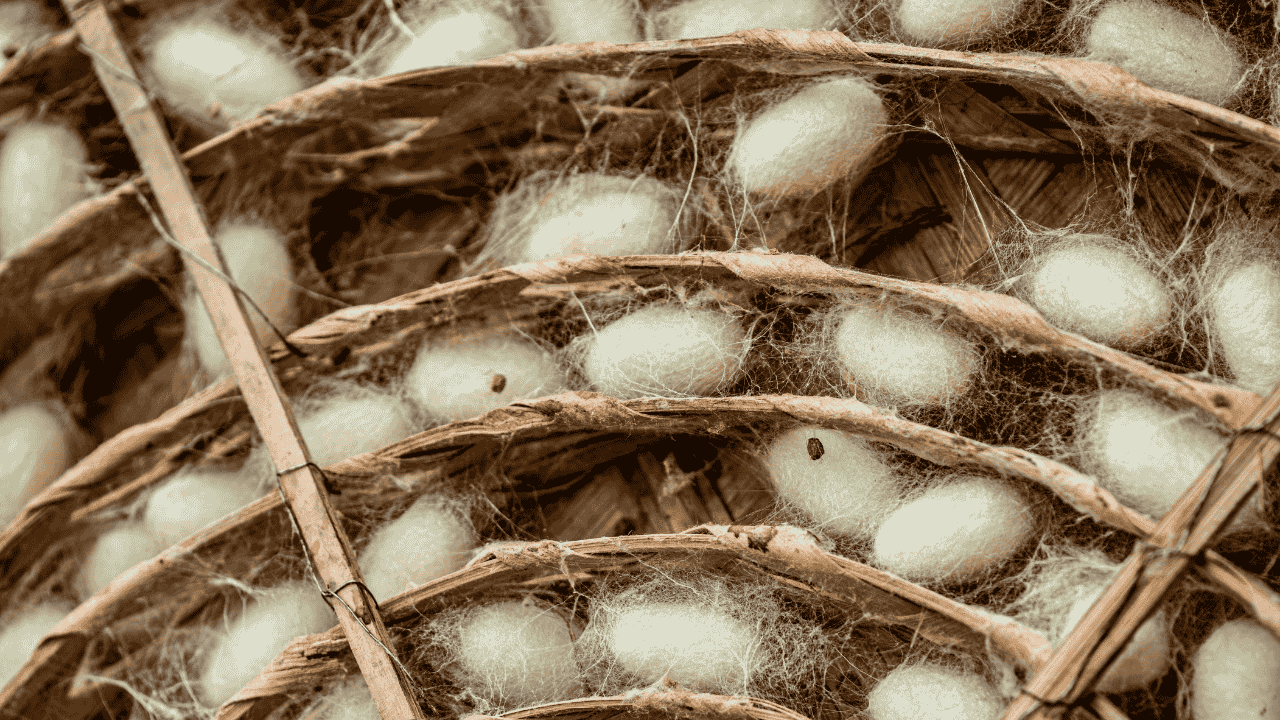Muhammad Luqman
For decades, families in rural Punjab have been keeping an age-old tradition alive: raising silkworms to produce silk.
This small-scale industry, known as sericulture, continues to provide work and income to thousands of households, even though it faces serious challenges.
More than 4,000 households across Punjab are involved in silkworm farming. Experts say the practice not only keeps a centuries-old craft alive but also creates much-needed jobs in villages where work is often hard to find.
Silkworm Farming in Punjab
Silkworm farming in Punjab takes place mainly during two seasons — from January to April and again from September to October.
“Silkworms feed only on mulberry leaves. That’s why this industry thrives in areas where mulberry trees are grown,” explained Farooq Bhatti, Deputy Director of Sericulture at the Punjab Forest Department.
At present, mulberry plantations cover nearly 400 acres of land in Punjab.
The Changa Manga forest leads with 150 acres, followed by 60 acres in Chichawatni. Other regions include Mandi Bahauddin, Kamalia, Rajana, Toba Tek Singh, Faisalabad, Sialkot, Peerowal, and Bahawalpur. Around 4,000 women across these areas are directly engaged in the sector.
From Global Player to Decline
Until the 1980s, Pakistan was among the top 12 silk-producing countries in the world.
But the industry later weakened when local silk was replaced by imports of cocoons from India and Central Asia, Farooq said.
Today, Pakistan’s textile sector imports both synthetic and natural silk yarn worth Rs112 billion each year.
“If we encourage local production of natural silk, we could save a big chunk of foreign exchange,” Farooq stressed.
He also suggested that the Punjab government restructure its sericulture department into a non-timber directorate, similar to those in Khyber Pakhtunkhwa and Sindh, to better manage silk, medicinal plants, and even beekeeping.
Struggles of Silkworm Farmers
Like most small industries in Pakistan, silkworm farmers face hurdles such as lack of loans and credit facilities.
“We tried to work with the microfinance group Akhuwat in 2019, but the plan never worked out,” Farooq said.
Currently, silk is bought from farmers by middlemen, who then sell it to textile mills after converting it into yarn. To support women in the sector, the Punjab Forest Department recently introduced a leaf-plucking program.
“Some companies buy mulberry leaves from women farmers and supply them to pharmaceutical firms,” Farooq explained. Women are given permits to sell mulberry leaves at around Rs1,000 per 40kg. If the leaves are dried, they can fetch up to Rs5,000 per 40kg.
He added that the replacement of mulberry trees with eucalyptus in the Changa Manga forest during the 1990s badly hurt the sericulture sector.
A Road to Revival
Farmers say the industry could grow again with better support. Local seed multiplication and easier loans could make a huge difference.
“A family can earn up to Rs50,000 by raising silkworms from just one packet of seed,” said Rana Saeed Anwar, President of the All-Punjab Silk Farmer and Trader Association.
He also urged the government to provide silk reeling machines so farmers could produce yarn directly, without depending on middlemen.
Author Profile






